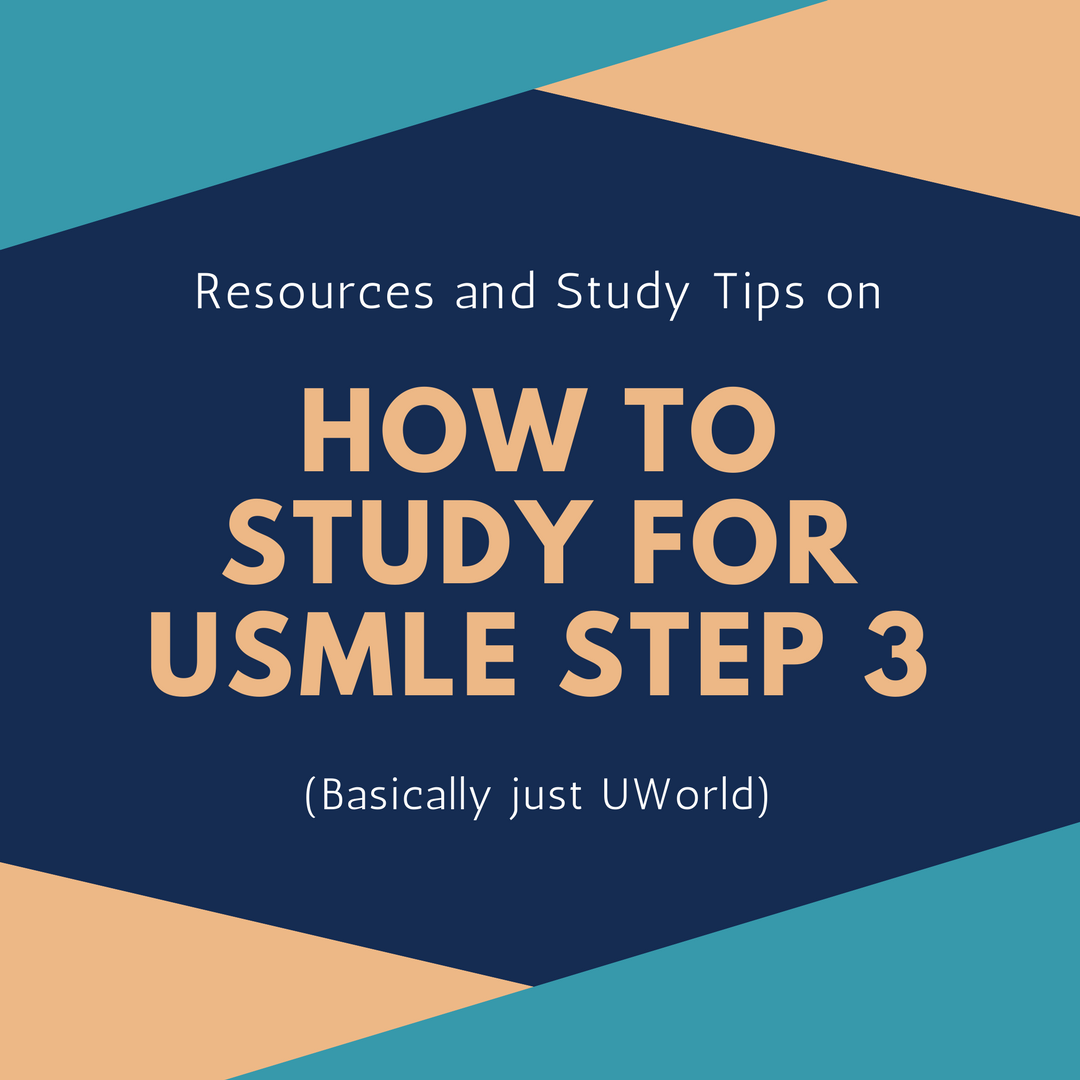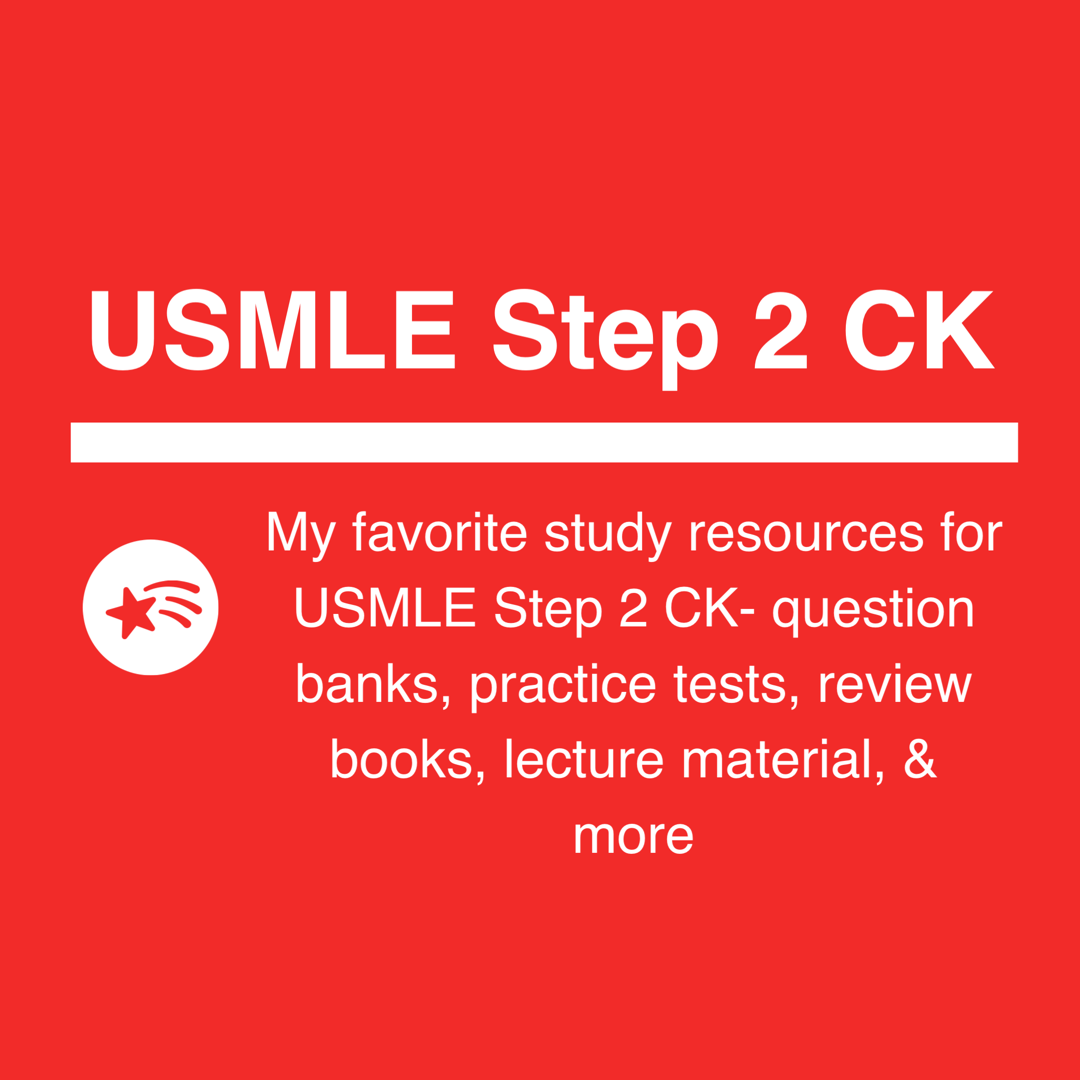*Disclaimer: Below are my favorite resources with associated links. If you like my blog please use the links to buy any books on Amazon or services (Picmonic, OnlineMedEd) as I receive a small referral fee that helps me keep this blog up and running! I only listed products I trust or and/or used*
Question Banks
The purpose of doing practice questions is to find your weaknesses in order to guide your study process and to get you inside the head of question writers. Hopefully you figured this out already since you most likely already took step 1. However, I found studying for step 2 CK to be more difficult than step 1 because of the other obligations that MS3 requires. Question banks are also great on the go. Long subway to your friend’s apartment on the upper east side? Do a question set on the train. Bored in between lectures? Practice questions. Lost your resident and don’t feel like going back to the floor? Practice questions. Practice questions? Practice questions! Here are the practice questions I used.
Still the gold standard when it comes to practice questions. There is no way around it. You can read the message boards on Student Doctor Network and they all reiterate what I find to be true. That UWorld is the end all and be all when it comes essential resources for Step 2 CK. Some students will argue that UWorld and a review book are the only resources you need for step 2 CK and for the most part that is true. I completed UWorld in its entirety once. Then I completed all of the questions I got wrong (which was nearly half of them). Then I continued to do full question sets until test day so I ended up doing UWorld two and a half times. I highly suggest it.
Kaplan is the other major question bank out there. I used to do Kaplan questions with my friend who preferred not to ‘waste’ UWorld when he studied for his clinical clerkship exams. Just like step 1, a major advantage of Kaplan to UWorld is that they tell you exactly where this topic or subject is located in the most popular review books. I enjoyed using Kaplan but chose not to invest more money in another review book when I could borrow my friends’ PreTest books instead. That being said, I haven’t heard terrible things about Kaplan.
I took step 2 during the second week of my first elective rotation in cardiology. So the bulk of my serious step 2 studying was done during my 8 week surgery core and subsequent 4 week surgery elective. I took a practice test and I did terribly. Like embarrassingly bad. And my worst subject was surgery. I had completed all of the UWorld surgery questions and ran through them all a second time. I wasn’t being lazy either. I read through and studied the answers to each question but I just wasn’t making any progress. My friend suggested I try pre-test and I loved it. Pre-test gives you over a thousand questions for each clerkship exam. In some regards they go into far too much detail than you actually need for your step exam and cover a much wider scope of subjects than UWorld alone…but that’s exactly why I used it. You can finish all of the UWorld or Kaplan questions for the smaller subjects like psych and pediatrics quite quickly. These books expose you to a lot more pathology that other qbanks don’t cover. I highly suggest using this resource for in between lectures, after you finish a specific section of UWorld, or if you just want more high quality practice questions. Just beware that they are not NBME format. So I would shy away from them when it comes closer to test day
Practice Tests
The purpose of practice tests are to find your weaknesses and to exploit them in order to maximize your score. Basically, study what you suck at! That’s the point of doing practice questions and that’s the point of doing a practice exam. So you can tell if your study process is working or not. For instance, after I started dedicating more and more time to study my weakest subject, surgery, my score began to creep up. I found that the number of questions I got wrong in other subjects continued to stay relatively stable but I was able to decrease the number of surgery questions I got wrong from 20, then to 12, then to 8, and on my last practice test I literally got zero surgery questions wrong. My point is that you can’t just keep taking practice tests to see what score you would get on step 2. That’s great and you should do that but you have to remember that the purpose of taking a practice test is to evaluate your weaknesses and to strategically focus on them. Okay, now I can get off my soap box.
NBME is the gold standard because they are written just like the real test. You have to use these wisely because there are only a limited number of them. Additionally, I believe that it is worth the ten extra dollars to purchase the expanded feedback. This option grants you the ability to see which questions you got wrong. Annoyingly, they don’t tell Sure you can screen shot every single question if you really want to (unlike UWorld Self Assessment) but this is so much easier and also doesn’t mess with your ability to recreate test day.
The only reason this resource isn’t above the NBME practice exams is because there is only one USMLE World Self Assessment (UWSA). Both the NBME’s and the UWSA are only half as long as the real thing but the advantage of the UWSA is that they are like UWorld question sets. You are given full UWorld style explanations of each question, both the questions you get correct and incorrect alike. I chose to make this my last practice test because I was able to utilize these four individual question sets like they were new questions that I was able to review afterwards.
Review Books
I encountered a few problems when I chose which review book to utilize. My ideal review book would have everything in it already. Explanations from UWorld, differential diagnosis categorized by both chief complaint as well as pathophysiology, best initial test, most accurate test, best initial therapy, maintenance therapies, and alternative therapies. I never found that type of book. So go to the book store and check them out for yourself before you buy them.
I liked MTB for the same reason why I disliked it. Its brevity is nice when you just want a quick and dirty answer but it leaves you hanging at times when you want more detailed UWorld style explanations (seriously, why can’t someone just put UWorld in a book format already?!). Between UWorld and MTB you are guaranteed to pass step 2 because they cover all of the high yield stuff but be prepared to annotate the shit out of it. Bonus tip: use MTB for step 3 instead of the step 2 CK version. It’s got a few extra gems in there and it’s really not all that different from it’s step 2 cousin. This way you won’t have to start all over again for your next step.
First Aid was my step 1 bible but I didn’t use it for step 2 CK and I regret that decision. I borrowed this book a few times from my friends and I liked it. It mimics the step 1 version quite well. Again, I did not use this as a primary resource but I would encourage you to check it out.
I used Step Up to Medicine (SU2M) for internal medicine only and did not use Step Up To USMLE CK because I disliked SU2M so much. If MTB has too little information then this is the complete opposite side of the spectrum. It has long winded explanations of every subject in bullet format. Some people liked that but it wasn’t for me.
Lecture Material
Lectures were less valuable to me for step 2 than for step 1. I just didn’t have enough time to sit down and watch video lectures. My favorite way to study was to simply review whatever disease my patients had that day. Every once in a while however I just didn’t know something and needed someone to spell it out for me. These are the resources I used for those moments.
This is by far my new favorite resource that I utilized for step 2. Online MedEd uses a reverse classroom style of teaching with whiteboard based lectures. Lecture videos range in length and subject matter but are amazing resources for both step 2 and for the wards. For instance, one day I was feeling a little lost about fluid management so I went to the library and threw on the fluid management videos. I went back to the floors with a better grasp of what I was doing and didn’t feel like such an idiot. I especially liked the algorithmic way of thinking they employ. I watched every video and would do it again in a heart beat.
I loved DIT for step 1 but it just didn’t do it for me for step 2. I didn’t have hours and hours to watch videos everyday, nor did I have the energy for it (that’s why I liked OnlineMedEd a little bit more because their videos were short and to the point). What I still loved about DIT was that they remind you of what you may have forgotten. The pre-lecture and post-lecture quizzes are gold. It wasn’t for me but doesn’t mean you shouldn’t at least check them out. Not to mention they’re great guys to follow on Twitter.
Kaplan Lecture Videos
I got my hands on these videos and they were fantastic. Conrad Fischer at his best. If you liked Kaplan for step 1 then you will like them for step 2.
Miscellaneous
The other stuff that doesn’t fit into a pretty category like the stuff I already mentioned.
This book is pure gold and I highly recommend it to anyone and everyone going through the match process. It provides analytical data on the match. The author provides objective data on a subjective subject like what characteristic traits different program directors like to see in their candidates the most in each respective specialty. This book provides advice on everything from writing your personal statement, the most commonly asked interview questions and the best way to answer them, what type of programs you should be applying to, who you should be asking for letter of recommendations from, and so much more. It was my most valuable resource before and during interview season. You won’t regret this investment. In fact, your friends are going to want to borrow it. Mine did.
Most medical schools provide this for you and it was easily my most often used resource during my third and fourth year of medical school. It’s like Wikipedia for medicine when Wikipedia doesn’t do a good enough job at explaining something. Or when someone points out that Wikipedia isn’t ‘a reliable resource’. Anyway, it’s amazing and I love it. Bonus tip: click the ‘summary and recommendations’ tab to get a quick snapshot of the article you’re checking out.
If you used Picmonic for step 1 then you should keep using it for step 2. I talked about Picmonic before and it still rings true. Every time I thought about brain tumors, tumors of the bone, any vasculitis, developmental disorder, and everything from biochemistry my Picmonic note cards would pop into my head. I’ll probably be that one resident who puts a Picmonic mnemonic in the presentation slides for morning report. I don’t ‘like like’ Picmonic. I love them.
*Use my link to get 30% off your Picmonic subscription!
Blueprints is like PreTest because they are good for shelf exams but not so much for dedicated step 2 CK studying. I highly disliked Blueprints because it was so long but others liked it for that exact same reason. Each chapter gives you a few bolded key words, tables and figures and explains the topic in great detail (again, too much detail in my opinion). The book ends with 100 NBME style questions with long explanations. I liked PreTest more because of how succinct it was but I have friends who, again, had the complete opposite opinion. To each his or her own.
Tablet > smart phone
If you don’t have a tablet already I would highly recomend purchasing one. If you are short on cash you do not need to purchase an iPad. There are tablets out there for under $100. Sure they aren’t as pretty but all that you realy need them for is accessing UWorld. Yes, you can simply use your smartphone instead of buying another piece of technology but unfortunately every time you have your phone out people will think you are texting. I remember once when I was on my phone doing a UWorld question set while I waited for the operating room to be cleaned and a nurse called me out for ‘texting instead of taking care of my patient’. Said patient was actually sitting next to me in her bed on her phone playing ‘2048’. She was trying to beat my high score and was failing miserably. Anyway, my patient kindly told the nurse to ‘kindly fuck off’. She was one of my favorite patients ever. Moral of the story: if you are on your phone people will think that you are texting no matter if you are using it to cure cancer or are actually texting.



